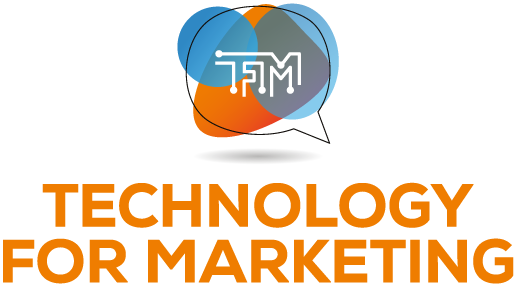Samantha Lewis-Williams on Personalisation and Automation at the Financial Times
)
Meet Samantha, currently the Head of Marketing Automation at the Financial Times.
What advice would you give your 20-year-old self?
Don't panic. Starting a career often comes with the misconception that others have it all figured out while you're floundering. Embrace the uncertainty; you may not even know what your dream job is yet. I would reassure my younger self that the journey to discovering one's true passion takes time. Keep an open mind, listen to others in different roles, and be proactive about exploring opportunities. Don't be afraid to approach people, inquire about their experiences, and learn about various industries. It's through these interactions that you'll uncover the job or passion that truly resonates with you.
In your talk, you mentioned the challenge of engaging subscribers who visited the Financial Times website at least twice a week and reducing churn. Can you share more about this challenge and how you tackled it?
Our objective revolves around a habit metric, assessing subscriber engagement through their visits. Ideally, we want readers to visit us multiple times a day, but the metric indicates engagement at least twice a week. To meet our annual habit target, we aimed to shift more subscribers to the twice-a-week bracket and encourage those already visiting twice to add an extra day. Our ongoing strategy involves understanding why users engage, leveraging customer insights, and analysing habits.
We set ourselves apart by deliberately defining "habit," aspiring for readers to incorporate FT into their daily routines. Initially, we explored user behaviours—how many visited twice, why some engaged less, and their areas of interest. For non-engaged users, we identified similar audiences and determined the factors driving increased site visits.
Rather than relying solely on emails, acknowledging email readership limitations, we opted for on-site messaging. We reached users through channels they were already engaged with, such as the app or website. Our focus shifted to providing compelling reasons for readers to return, seamlessly integrating FT into their routine. For example, if a user reads an article on US politics, we offer reasons to return the next day, like following the topic or subscribing to a related newsletter.
The strategy aims for self-sufficiency, reducing the reliance on constant emails. Ideally, users recognise that the optimal FT experience involves daily visits, empowering them with tools for self-service and sustained engagement without continual email reminders.
Can you share some best practices for organisations looking to enhance their subscribers’ engagement?
Personalisation is crucial, extending beyond using just a first name in a subject line. It's about being intensely customer-centric and understanding why individuals choose your product or, in our case, read our content. Everyone has a unique reason, and we gather extensive data to inform decisions. If data is lacking, we invest time beforehand in research, surveys, and preference centres to understand user motivations. This data-driven approach allows us to personalise experiences and make them truly valuable.
Internally, our team structure is unique. The automation team, at the bottom of the journey, crafts the experience. However, the process starts months in advance with the head of planning, who analyses news trends, customer insights, and acts as the voice of the customer. This information flows down to the marketing team, which covers early life and in-life retention. They set the direction based on insights from planning and additional analysis, creating a clear brief. By the time the automation team receives the brief, there's no guesswork; they have all the insights needed to execute swiftly.
We adopt an 80/20 approach, planning for what we can predict, such as the upcoming US election, and ensuring our automation ecosystem is agile enough to handle unforeseen events. The goal is to work at the pace of the newsroom, turning insights into actionable strategies quickly.
Would you say this also applies to organisations that are not necessarily news-related?
Yeah, I think so. For us, being a news organisation, we're not the BBC; we don't break news immediately. We provide analysis and opinions that people are willing to pay for. This mindset also applies to other industries. It's crucial to consider if customers expect certain commentary or information from your brand. Not all news or topics align with your brand identity. For instance, during significant events, like the passing of the Queen, brands commenting on unrelated matters can be confusing for customers. It's essential to tie communications back to why customers value your brand in the first place.
There are talks about moving towards a cookieless future, and people being less inclined to share their data. Is that something that worries you, and how would you go about future-proofing?
It’s definitely on our radar. We try not to worry about it but acknowledge the changing landscape. With GDPR, concerns led to improved working practices. Regarding cookies, it's a concern as personalization is a significant part of our job. To future-proof, we're focusing on creating a value exchange. Customers are more aware of data privacy, so we're transparent about the benefits of sharing data. We're turning touchpoints into trust points, emphasizing that data sharing enhances their experience. Testing different channels and understanding customer preferences help us tailor communications. For example, revamping onboarding experiences for registered users involves gently asking for essential information, ensuring a personalised and valuable experience.
🎧Listen to Samantha's Session
QUICK-FIRE QUESTIONS
What is your favourite social media platform and why?
Instagram. Because of all the dogs.
What do you see in the future of marketing?
I think marketing will become more comprehensive, incorporating data, automation, and working closely with data science and product insights. Marketing professionals will need to be multi-skilled in various areas to create effective campaigns as data becomes increasingly essential.
Is there a marketing campaign that you liked recently?
Costa's email campaign featuring hot milkshakes was brilliant. They initially sent an email with an upside-down image, followed by a second email saying "Oops." The entire campaign revolved around turning drinks upside down, a clever and amusing approach.
What is one of your proudest moments in your career so far?
At the end of last year, my team won an internal prize for the best use of data and insights to engage customers. The recognition from peers and the team was gratifying, acknowledging our hard work.
What is something you're still looking forward to achieving in your career?
I'm excited about the open-ended future of marketing automation. Exploring new opportunities, advancements in technology, and evolving with the industry to carve out an exciting and eventful career path is something I look forward to.
Latest News
-
Kat Worley on Optimising the Online Experience
26 Nov 2025Ecommerce manager Kat Worley shares how data, creativity, and customer-centric thinking shape impactful digital experiences, reflecting on career lessons, platform insights, and the innovations transf ... -
Top 100 Marketing Influencers — 2025 Ranked List
30 Sept 2025Discover the Top 100 Marketing Influencers of 2025. The visionaries, innovators, and disruptors shaping digital, brand, content, social, and growth marketing, driving conversations and redefining indu ... -
Meet some of the team behind eCommerce Expo and Technology for Marketing. From planning highlights to industry trends, discover how they shape the UK’s biggest retail and marketing events.
-
Grace Miller reveals how “failing smarter” transforms experimentation into growth. From lessons learned to advice for future innovators, she explains why embracing failure is the key to progress in eC ...
-
How Temu Helped This UK Manufacturer Increase Sales and Create Jobs
26 Aug 2025 TemuFacing rising costs and shrinking sales channels, Nova Tissue turned to Temu. The platform rapidly boosted sales, safeguarded margins, and created UK jobs—transforming e-commerce into a major growth d ... -
Michelle Hurney on Personalised & Powerful: Driving Retention Through Smart CRM
20 Aug 2025 Phoebe Dunsmore, Marketing ExecutiveMichelle Hurney, Head of CRM at Wonderskin, explores career lessons, customer engagement, and how data, empathy, and AI shape the future of retention-focused marketing. -
The Rise of Influencer Accountability: Misrepresentation, Fines, and Evolving With The Industry
20 Aug 2025 RightlanderIn today’s digital economy, high-profile social media influencers wield significant power over consumer behaviour. However, with great influence comes great responsibility. From Italy to the UK and be ... -
Top 100 Marketing Influencers — 2025 Shortlist
15 Aug 2025Meet the Top 100 Marketing Influencers Shortlist of 2025. The innovators, disruptors, and rising stars leading the way in marketing. This year’s ranking is still under wraps, and the countdown begins ... -
Safeguarding Brand Reputation with Automated Compliance Tools: Why AI Alone Doesn’t Cut It
30 Jul 2025 RightlanderAutomated compliance tools are essential for brand protection. This article explores their strengths, the risks of relying solely on AI, and why a hybrid approach ensures compliance and consistency.

)
)
)
)
)
)
)
)
)
)
)
)

)
)
)
)
)
)
)
)
)
)
)
)
)
)
)
)
)
)
)
)
)
)
)
)
)